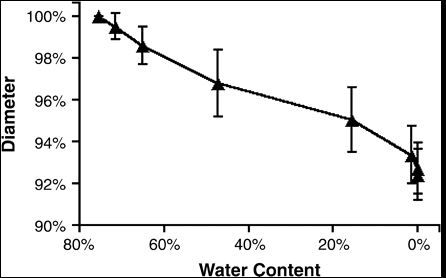Diameter difference
The Problem
As the challenge conservation x states, two newly discovered invasive fungal pathogens are killing hundreds of thousands of ʻŌhiʻa trees (Metrosideros polymorpha) on Hawaii island. The reason is the ROD fungus is an invisible killer, many ʻŌhiʻa trees are found in remote sites or challenging terrain and being able to reach such sites is difficult. According to many research results, most of the dead trees showed a decrease in diameter growth when tree is dying. This could indicate that the stem contracted due to loss of moisture because the tree could not absorb the necessary water through the roots. The stem cross-sections of live trees have 75.6 per cent water content by dry weight, and when the moisture declined due to their being dried, their diameter also decreased. Expressing this decline as a percentage of the original cross-section diameter, it decreased 7.6 percent compared with the original dimensions. This diameter decrease did not have a linear relationship with the loss in the humidity content, where it was greater at water contents less than 20 percent. The bark and the wood did not decrease in the same proportion. Wood occupied 90.5 percent of the cross-section diameter when its water content was at its maximum, but changed to 93.5 percent with the minimum water content. For these, the bark had a greater reduction (9.5–6.5 percent of the cross-sections diameter) when water content was lowered.
Our Proposal
That means a tree which is starting to be dry will show a decrease in diameter in its steam. It is known that the ROD fungus attacks the Ohi'a tree by chocking the water transport until it dies out of the water. That means it is obvious that infected Ohi'a tree has a decreasing diameter of their steam we can use this sign to get the symptom when they are infected or dying. The best method is tying a coloured string in every tree and if the tree is infected the string will start to fall because of a decrease in the diameter. I am amazed to say that I have thought of many possible solutions, many experiments relating to trees water loss and I think this is the easiest solution. The first step is seeing if the change in diameter of the infected Ohi'a tree is somewhat noticeable and tie a coloured string to test my theory. This proposed solution makes a significant contribution in advancing the detection of the ROD fungi in efficacy, speed and efficiency.
We Assume that...
Since dying trees decrease their diameter, the case is no different for the Ohi'a tree.
Constraints to Overcome
The current method of detection of the ROD fungi involves sample collection over challenging and rugged terrain and then lab analysis. This takes too much time and effort and the after the analysis, the ROD fungus might not be found. This project solves these problems because it tells us from which tree to take samples, which tree needs supervision and possible diagnosis of the tree before the lab report. Meaning, a tree which has lower diameter is likely lucking water in its body which implies exposure to the ROD fungi. This indication can speed up the detection of the ROD fungus. Currently, the total average cost per tree is 57.00 USD. If we test 100 trees to collect samples from all the 100 trees and test it in the lab, the total average cost per 100 trees becomes 5,700.00 USD. Keep in mind that the lab test may show that 1 tree have ROD fungi if not any. This project tells us from which tree to take samples saving about 5,640.00 USD at best in this scenario.
Current Work
This solution is very tangible and realistic because it connects two known and proved science facts together in a very simple way. According to references like I mentioned above, trees which luck water in their body or dying trees show a decrease in their diameter. It is a known fact that gravity makes lose strings fall to the ground. So, combining those will create a new method to prevent the ROD fungus enters into the tree. There will not be a negative impact on the tree caused by the solution. the solution can be used at any time the client wishes to use or test because all is needed is to tie a string and experiment. All required is tying a string in the healthy tree and infect the tree with the ROD. If there is a difference in diameter, we have our successful prototype.
Current Needs
I need collaboration and funding to test this solution.
